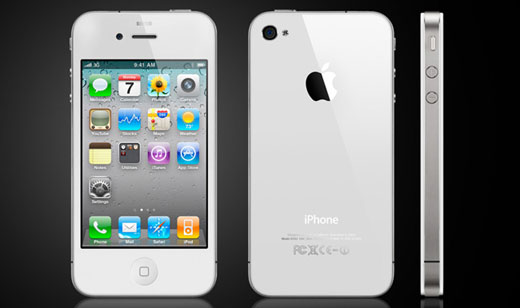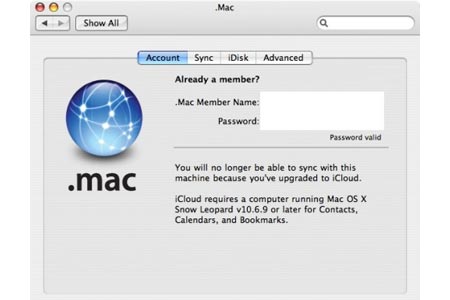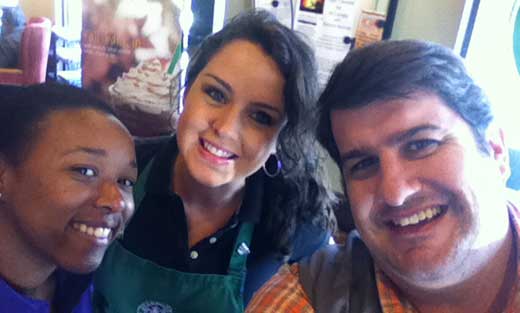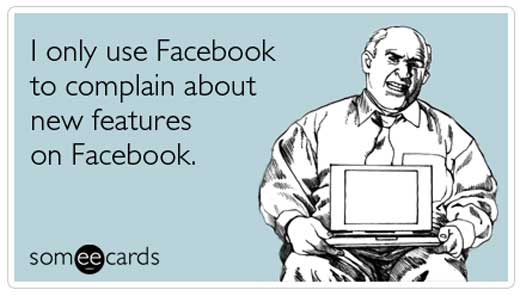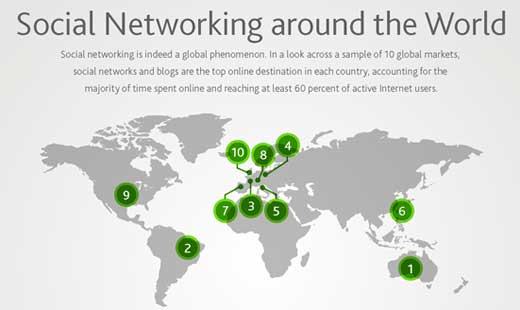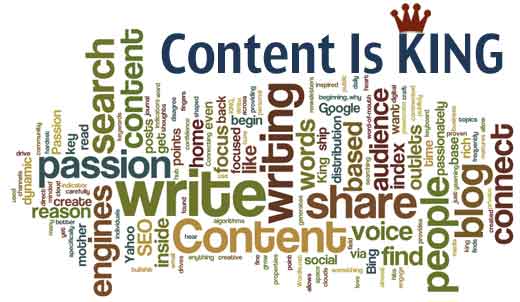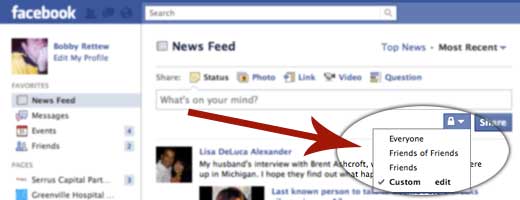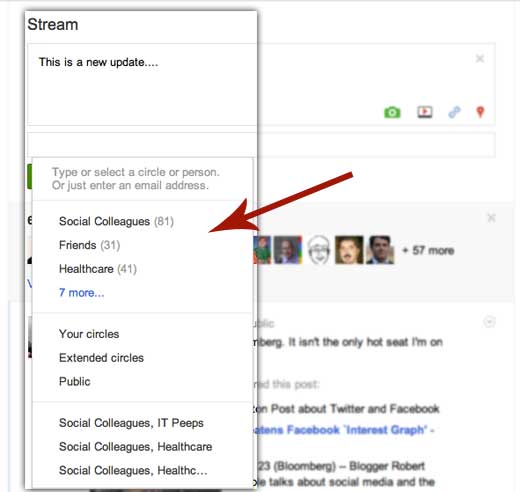I have met with more physician practices and pediatrician groups who want to start a Facebook page specifically for flu season. They explain the main reason is to share information about flu season with their patientes. So…is this really the right reason to start a page, or even the right time?
Based on the CDC’s website: “In the Northern hemisphere, winter is the time for flu, but the exact timing and duration of flu seasons vary. While flu outbreaks can happen as early as October, most of the time flu activity peaks in January or later.” Given this information, we have entered into flu season with it potentially peaking during the winter months, more specifically peaking in February.
So, should you use this as an opportunity to start a Facebook Page for your practice for flu season? Well, here are some things to think through:
- Are you going to use this Facebook page for more than information about flu season?
- Do you think you have enough time to get all your patients to “Like” the page so they can receive information about 2011-2012 flu season.
- Exactly what are you going to share about flu season on a weekly basis, information that people are willing to have this show up on their personal Facebook newsfeed?
- How else is your practice communicating information about flu season and what tools are you using? (website, newsletter, brochures, in-office communication)
- How are you going to use Facebook to build a social community around your practice outside of flu season?
- Do you have time to commit to maintaining the Facebook page, to specifically connect with your patients?
- Is your practice a part of a hospital system? If so, can you leverage their Facebook community to share information about flu season?
Bottomline…it is never “too late” to start a Facebook page. But, you have to think through how you want to use this social outlet beyond flu season and if you have the time and resources to connect with your patients using this social outlet.
Here are some great links about about flu season from the CDC’s wesbite:
- What to expect from the 2011-2012 Flu Season: CLICK HERE
- Information about the flu vaccine from FLU.gov: CLICK HERE
- CDC’s information about the flu vaccine: CLICK HERE
- CDC’s Twitter account dedicated to the flu season: @CDCFlu
- How-to set-up a Facebook page by Mashable.com: CLICK HERE
Yes…all of us Apple devices addicts, we are excited about the iPhone4S release. I have already pre-ordered my new little device…I am a gadget freak. I think I am going to give Sarah (the wife) my iPhone4. I ordered the white version so we can distinguish the two. But, here is where Apple has me pinned…and what makes Steve Jobs a brilliant business man and entrepreneur.
My iPhone4S probably, maybe will not integrate with my Contacts and Final Cut Pro workflow. You are saying what? Well, if you are a video professional like me, you will read more!
So here are the Apple Products I use:
1) MacBook Pro 15″ purchased this summer (2011) with Snow Leopard (10.6.8)
2) MacPro from 2009 with Snow Leopard (10.6.8)
3) iPhone4
4) iPad 3G (First Generation)
5) Final Cut Pro 6.0.6
6) MobileMe (Sync Contacts & Other Preferences)
So the two things that are messing me up with this new upgrade to the iPhone4S, the fact it will be delivered the same day the iCloud product is released, which will also replace my MobileMe account. In order to use iCloud, the service that will now replace MobileMe account which syncs my contacts between devices…I have to use the new operating system on my Mac Computers, know as Lion (10.7). Yes…I would have to upgrade my operating systems on both computers if I want my contacts to sync between devices using my Address Book app on these devices…Apple’s preferred and default application for contacts.
To most of you…that is a no brainer! Just upgrade and be done with it. Right? NO!
I also use FinalCut Pro 6.0.6 which can only run on the operating system Snow Leopard (10.6.8) and all subsequent operating systems. This is a big deal. Apple has released the new Final Cut X for the new operating system Lion (10.7). BUT, it is 1/4th the original price and is not a professional grade video editing system (NLE). I cannot up-convert years and years….thousands and thousands of dollars of production to the new Final Cut X. Many think this is Apple’s push to get out of the professional editing business and focus on the pro-sumer and consumer. If you want to read the detailed review of Final Cut Pro X…here is a GREAT REVIEW! CLICK HERE to read why upgrading to Final Cut X is not a solution to professionals like me.
Now I also edit using Avid Media Composer for heavy compositing and 3D editing…but not for basic video workflows. Plus, we are waiting for Avid to release the new Avid Media Composer for Lion (10.7). It takes a while for this high end, hollywood video editing solution to test and release the newest version. They are waiting for the quarks in Lion (10.7) to get worked out.
So…for those video professionals who want a iPhone4S, use FinalCut Pro 6.0.6 (professional standard), and sync contacts in Address Book…here is what I have found as a solution:
1) Apple is apparently going to release a new Snow Leopard update (10.6.9) which will integrate with iCloud, so we can utilize the limited capabilities of syncing between devices.
2) Run a dual-boot system where you partition your Mac’s to run:
– Partition One – Lion (10.7) for basic computer solutions and syncing with iCloud
– Partition Two – Snow Leopard (10.6.x) for video editing solutions with FinalCut Pro or Avid products.
Here is an an article showing how some believe there is a Snow Leopard 10.6.9 update on the way that will integrate with iCloud: CLICK HERE for the article.
So…I am in limbo. Yes…waiting for October 14th. This is the day when my new iPhone4S should arrive, the day iCloud should be released, and hopefully the day when the new Snow Leopard (10.6.9) should be released. We will see. I have some serious decisions to make based on the events of the next week for business workflow and video production workflow.
OK…for all you Droid people out there who are saying the “open” platform…I hear ya. I do run my business off Google Apps including business class email, documents, and calendars. BUT, I do not really like the Droid based products and the platform. Plus…there are many articles this is not really an open platform. To me, the Android user interface is not for me and not what I consider intuitive for my needs. Plus…I have way too much money invested in my current workflow and technology.
So why does this conundrum make Steve Jobs and Apple such a wonderful brand story? Because, their business practices have me in this dedicated conundrum and internal debate. Because…I love the products, willing to pay for the technology, and find enough value in the Apple solutions to research how to make these products work for me. That is why millions of other production professionals like me will continue to invest in these products. We want the newest Apple gadget and willing to pay the financial price and the integration issues to have these gadgets.
Let the waiting game begin…off to the Apple Forums and discussion boards.
There is no better affirmation of success than seeing your “Students” succeeding and excited about life. Teaching at Clemson is the one thing that has changed my business approach and has helped me grow professionally everyday. As I sit here in Starbucks in downtown Clemson, I have already seen two students who have gone through my Business Writing and Entrepreneurship classes…each of them excited to say hi!
Their vibrant smiles remind me everyday why we as professionals should try to teach, give something of ourselves to those who will change the face of tomorrow. On this Clemson Homecoming weekend, it is so much fun to come home to Clemson weekly and see those students who have taught me something special about life.
Rose is a month old, yes! Today, she is now a month old…she was born on September 6th and from the very moment she came into our lives, I have seen life through a new set of eyes. Now I am starting to understand the statement my mother has preached to me over the years…a parent’s love is like no other.
One of the things that Sarah and I agreed upon when Rose was born, we wanted to document the whole experience. Yes, we believe in photography and we also believe in sharing our joy with our close friends and family. Sarah and I actually spent the good portion of our wedding budget on photography, hiring a wonderful portrait photographer and photojournalist. So when Rose was on the way, we knew we had to capture the event.
Given this statement, our family members are social creatures as well and they all are aspiring shutterbugs. The first moment we knew we had a social media situation on our hands…when the family met Rose for the first time and they were taking pictures with their smart-phones. Sarah and I had been up all night…Rose was no more than an hour old. We had to put the kibosh on uploading pictures to Facebook. Now this seems weird, but we did not want someone else, other than Rose’s parents, sharing the first pictures of Rose with the world.
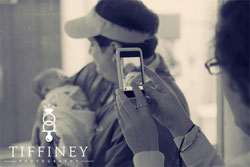
But this was only the beginning, friends and family visited the hospital room over the next few days. Sarah was recovering and I was trying to enjoy the moments. People taking pictures with Blackberry’s, iPhones, and Droids. Before we knew it…photos of Rose were being uploaded. Sarah and I were all over Facebook after a long night in the hospital. Sarah was still recovering from just giving birth…she was tired and probably not happy with her appearance.
Over the last month, we have been trying to filter through the wonderful images uploaded and some that just did not needed to be shared online. The tremendous reach of Facebook’s Photo Albums are tremendous. Many large and small organizations have built tremendous followings with just sharing images including Children’s Hospital Boston with over 650K “Likes”. We have become a part of a public newsfeed. This former journalist who was not afraid to plaster someone’s daily rituals on the six o’clock news now had his most private, yet exciting moment shared all over Facebook…and did not even realize it.
If you are like me…your Facebook account might be a combination of personal friends and professional acquaintances. You might even have clients and business relationships inside your Facebook account. Each person might have the ability to see each picture uploaded each time your name is tagged on an image. The reach of a photo is tremendous.
How have we succumb to this point in our social space. We want to share so fast we do not even think about the potential ramifications of an image. Someone’s excitement might be someone else’s most private moment. Are we even prepared to write social media policies for our friends and families…I thought that was for the corporate world.
As I look back over the past month with my new little girl…there is an upside to the Facebook sharing madness. The whole event has been well documented. It has also been well shared. Believe me…I have had people I did not even know walk up to me in a restaurant congratulating me on my beautiful girl. Thank you Facebook for providing the platform.
But here is food for thought…when you share, are you sharing with the best intentions. Have you sat back and considered what you are sharing might be a private moment for another? Or has the expectation of privacy been long thrown out the door with this social sharing revolution?
*** Images by Tiffiney Addis of TiffineyPhotography.com. She is wonderful and we are blessed to be working with her over the next year!
It was just this past week while I was working with a group of physicians, one pediatrician asked me why they should care about Facebook. I answered to this 25 year veteran of children’s medicine…look at the numbers. The gate keeper to medical decisions in families are women from the ages of 25-44 and these women are the main audiences on Facebook. The pediatrician looked at me and he understood…but I could tell something was bothering him. It is the same thing that is bothering me…time management. How do we squeeze this into their ever busy lives.
Nielsen released social networking stats showing that women from the ages of 18-34 are the most active on social networks. 53.5% of all U.S. social network users spend the most time on Facebook. Last week, Facebook shared that 500 Million people have been on Facebook on any given day. According to Facebook, the new profile will be your story, revealing your life in one single page. That is scary when you think about it…our life charted out in one single page. Are we addicted? You would think that the top addictions in the US might be smoking and gambling, nope. Here is a list of America’s Top 5 Addictions according to best selling author of Addict Nation, Jane Velez-Mitchell:
There is even a new disorder call the Facebook Addiction Disorder or FAD. Yes, I kid you not! FAD, or Facebook Addiction Disorder, is “a condition that is defined by hours spent on Facebook, so much time in fact that the healthy balance of the individual’s life is affected. It has been said that approximately 350 million people are suffering from the disorder that is detected through a simple set of six-criteria. People who are victims of the condition must have at least 2-3 of the following criteria during a 6-8 month time period.” Click here to read more about Facebook Addiction Disorder and The 6 Symptoms of FAD.
It is no surprise that social media outlets are time suckers. More and more organizations are questioning whether they should let employees interact on social networks while in the workplace. But here is a new part of that equation. The more time we spend, the larger the network grows…but the new variable are the changes made to outlets like Facebook. The more changes made, the more time we spend trying to figure out the changes, the more the community grows, the more we are not willing to vacate our investment.
Yes…Facebook has been making changes and as the largest social network, community members find it hard to vacate the experience. So many pictures are uploaded, so many friends online, so much time we engage and share our precious information.
I have to admit, I logged on this afternoon and I felt a bit overwhelmed. I sat an wondered, how much of my information is private? How much time is it going to take to figure out the changes? How much more am I going to have to worry about who sees what, what is shared, and what is shared with who. With the increasing amount of privacy settings (offered by Facebook including the ability to segment our updates via lists, public statuses, and now the subscribe option), these options continue to create so many segmented channels, we are having to increasingly spend more time thinking who we are sharing “what” information.
These options, yes all these new privacy options we highly requested as community members. As we received more and more friend invitations, we were noticing that more and more people were creeping into our lives. We began accepting invitations from people we might have met once, yet felt obliged to accept. Admit it…so many times you selected accept because you knew they knew someone you see daily or they sit in the cubicle next to you. This obligation has been causing the amount of people we are friends with in Facebook to increase to a point where it is just getting out of control. This increase caused our concerns of privacy which led to mass audiences requesting more options to segment information…and here we stand. Trying to figure out how to manage all these options…we are trapped.
We are now trapped in a predicament whether to thin out our friends on Facebook or submit to the multitude of options when it comes to how we share, let’s say, the pictures of children. Yes…we uploaded that new picture and for a brief second…we wondered, who needs to see this and how will I manage who tags the picture and which list it should be posted. Yes…these options have created a decision pattern that is beginning to detract from the main reason we joined Facebook…to share.
This culture of choosing is trickling down into our daily lives, this idea of who is a part of of our Facebook friends list is dictating who we are taking to during lunch or our business relationships. I have heard more and more conversations in businesses describing or sharing a story as they are wondering why they were de-friended or even blocked. This offline exchange is creating the barometer for which we are choosing our in-person relationships.
Family relationships are learning their status in the family when they notice a brother-in-law, sister-in-law, or even maternal relationships change online. The family dinners are surrounded by the uncomfortable lack of conversation as each person wonders why they are no longer receiving status updates from the loved one sitting beside them. This Facebook culture is beginning to shape our in-person lives, creating larger divisions just because we tagged someone in a picture they did not feel they looked their best. Admit it…you have been mad at mom or dad when they captured a picture of you not looking your best, then uploaded to Facebook, tagged your name, which put’s that no so good image out there for your circle of online friends to see. Better shave everyday.
We created these options…we wanted the ability to only share a picture, a status update, a piece of life-like information only with certain people. These options we requested and now, we have bought into these options with same hard distinctions as the high school party invitations. This thing we call Facebook has now infiltrated our every move, with hours of investment that we have a hard time living without. We have so much time invested…stopping for a week is just like giving up cigarettes. This addiction is shaping our culture. It is a time sucker and we created this Facebook. They gave us what we wanted.
So…my thesis is ths: The more time we spend on Facebook, the larger the community grows, the more Facebook will continue to make changes!
*** Image credit http://mytechquest.com/facebook/22-cool-desktop-wallpapers-for-facebook-lovers/
I think it is so freaking funny and flat out ironic the vast public out-cry surrounding the changes on Facebook today. Here I list the reasons…
1) Facebook is a free outlet that allows people to connect…AT NO COST! ***But this is not the reason for this post. We know it is free, so what.
2) This public outcry is happening on Facebook. Ok…think for a second. People are complaining about the changes made on the Facebook interface, using Facebook to publish their complaints, connect with others with similar feelings about how much they hate the changes on Facebook, connect with new people in comment areas making new friends where people are complaining about the changes in Facebook, creating a PR machine online so people can search how to deal with the changes on Facebook. This is so brilliant!
Ok…as of July 2011 Facebook is the number one visited web property internationally! Yes…check it out here:
http://www.google.com/adplanner/static/top1000/
So what has changed…well, let us look for a second. Not much…just more traffic and PR maybe?
Well, another brilliant PR effort for Facebook today. All it took is for Facebook to publish the changes last night, and in the last twenty-four hours more online news outlets have written about the changes including CNET, Baltimore Sun, Wall Street Journal, USA Today, Mashable, even the Christian Science Monitor. Yes, just by making a few user-experience changes, a public outcry turned into a media circus providing tons of coverage about the complaints and how it really effects the end-user. All of the reactions, write-ups, and blog posts led to interpretations of how to deal with the changes.
What is so great about this…the absolute irony, so many business and individuals depend on Facebook for daily communication. Companies invest tons of money on their Facebook pages, consultants, campaigns, all to capitalize from the rich traffic and communities based in this online community portal. Since Facebook is so rich in human capital…average users which are Facebook’s human capital…any changes create the feedback loop for Facebook, communicating how the changes effect the user base. FREE RESEARCH!
So a few changes have yielded free PR, free research, and a massive uprising that is really a bunch of petty complaints because you can’t find someone’s pictures fast enough. And then you fuss about it on the mere social network that made you mad. This circle…this feedback loop is the mere reason why Facebook is the number one social network in 2011. If it really made you mad, and you really did not like the updates, and you really want to make a statement…then do what you did with MySpace – QUIT USING IT. Then Facebook will get the message. But, complaining about small changes socially on a social network only reinforces what they do so well…connect people with a common cause. It just so happened to be Facebook today.
***Image from SomeEcard.com
OK…there are bunches of changes! I am not going to type all of them out, because there are so many other smart people that have done this!
If you want to watch the above video in HD, here is the link:
https://www.facebook.com/video/video.php?v=10100658170103643
Official Facebook Blog Post on the recent changes:
https://blog.facebook.com/blog.php?post=10150286921207131
This is what is included as an explanation in this post:
1. News Feed: See What Matters at the Top
2. Ticker: Join Friends in Real-Time
Here is where to learn more about the subscribe button on Facebook’s Blog:
https://blog.facebook.com/blog.php?post=10150280039742131
Here is where to learn more about Friend Lists:
https://blog.facebook.com/blog.php?post=10150278932602131
Here is a great blog post called New Facebook: 6 Things you Need to Know:
http://blog.lujure.com/2011/09/21/newfacebookchanges/
Here is what is discussed in New Facebook: 6 Things you Need to Know:
1. Top Stories and Most Recent now in one News Feed
2. Ticker becomes official
3. The Subscribe Button
4. The New Friend Button with Smart Lists
5. “Profile” disappears
6. Last but not least…
– Business pages do not need 25 Likes for a custom URL.
– More emails from Facebook
– The “Translate” button
– Links to track the path of a shared post
Finally, here is a great video by Brad Panovich giving a hands on tour exactly how Facebook has changed!
https://www.facebook.com/photo.php?v=1989051093764
Finally, a great post by Mashable.com that covers all the changes with images and explanations.
http://mashable.com/2011/09/20/facebook-news-feed-revamp/
1. Australia – Among Neilsen’s 10 Internet-metered markets, Australia Interent users spend the most time visiting social networks and blogs, averaging 7 hours and 17 minutes per person.
2. Brazil – Orkut is the #1 social network and blog site in Brazil, visited by 30.3 million Brazilians in May 2011, 11 percent more visitors that #2 site Facebook.
3. France – Nearly a quarter of active French Internet users – 9.6 million – visited #2 social networking site Overblog.
4. Germany – German Interent users spend more time on social networks and blogs than they do any other online category of sites, a total of 12.7 billion minutes during May 2011.
5. Italy – Italian Internet users spend nearly one-third of their time online visiting social networks and blogs (31% of total Internet time).
6. Japan – FC2 Blog – the top social networking site in Japan during May 2011 – was visited by over half of active Japanese Internet users.
7. Spain – Although Spanish Internet users spend most total time on #1 site Facebook, they average the most time per person on #4 site Tuenti (4 hours 42 minutes per person).
8. Switzerland – Social networks and blogs reach 60 percent of active Internet users in Switzerland.
9. U.S. – Blogger is now the #2 social networking and blog sire in the US with 501 million unique visitors, up 17 percent from a year ago.
10. U.K. – Internet users in the U.K. view 229.6 million pages on Tumblr, the second most page views on any social network or blog in the country after Facebook (20.2 million page views).
These statistics are from the 2011 3rd Quarter Social Media Report by Neilsen. http://blog.nielsen.com/nielsenwire/social/

Well…blogging is an international communication platform. Whether you are telling stories, sharing a recipe, sharing pictures from a trip, giving viewpoint about a press release, expressing a political view…blogs are our one single place to communicate in a way to crosses all geographic, ethnic, gender, and socio-economic borders. People are reading our thoughts.
Is the content of these blogs creating a mass homogeneous world of digital noise? More and more people are sharing and connecting by sharing their thoughts via blogs…but are we adding to the noise? If so, how can we create content that does not continue to add the mass hysteria but create a path for like minded individuals to freely connect.
Are we fueling Google, Bing, Yahoo, and all the other search engines highly charged financial model. The more content we give them to index, the more they rank content for social searchers (like ourselves) to find what we are looking for digitally.
Are we writing passionately or are we creating content just to say we wrote a post. Are we writing to build digital stamina, to flex digital muscles in the hopes someone thinks we are smart? Why do you write…to connect, to explore, or to self glorify our self-perpetuating egos. What is our mission when we write?
Is the story we are telling, the story we are writing significant enough to stand-out beyond the global, digital space? Can we say more with less and can we say it in a way that truly impacts our readers to take action…or are we just a bunch of marketers?
One of the more interesting things that continually fascinates me…we are still burying social links. What do I mean, burying social links on websites, televisions ads, print ads, etc.
Websites: I see more and more links to organizations, brands, individuals’ social links at the bottom of a website…or even below the fold. I wonder if web designers and developers are engrained with working with template based methodology? Maybe we just do not know what to do with the links? If we are blogging and have great content…why are we making it so hard to find the blog? Oh, let’s put the link to the blog at the bottom of the homepage and bury the blog in the navigation.
Television Ads: It is easy to just add the social media outlet icons (Twitter, Facebook, and YouTube) at the end of the spot. Watch some of the popular ads and you will see a glimpse of these icons in the last 3 seconds of the ads. Most of these outlets just put the icons without the link address to the social link. People need to see the exact URL and not just a Twitter, Facebook, or YouTube icon as an afterthought.
Print: Same as websites and television, these links and outlets are after thoughts. Social outlet icons or event links are buried at the bottom of a design or where we can squeeze them in somewhere. These icons are put there for “awareness” yet only bring awareness for the outlet as an organization, but give no URL to go find the links and engage.
This makes no sense to me?
It is my belief that a YouTube channel has the greatest reach than any other social outlet. Yes, it is a destination social outlet where Twitter, Facebook, and blogs are gateways to YouTube. So if Twitter, Facebook, and blogs are gateways to YouTube, why are we making it hard for individuals to find these social links?
Let’s look at YouTube…it has twice as potency as all the other social outlets. Links to YouTube videos last twice as long in the social space than links to any other content, basically has twice as long half-life as other social links. Here is the research from bit.ly on Mashable.com: http://mashable.com/2011/09/06/links-sharing-bitly/
Also…social media-related YouTube stats are just as impressive. YouTube says that on average there are more than 400 tweets per minute containing a YouTube link. Meanwhile, over on Facebook over 150 years worth of YouTube videos are watched every single day. OK, with these stats…we should make it easier for our audiences to find our video content.
Let’s take a look at this YouTube video by Fancy Feast. It is one of their newest campaigns, encouraging you go find more of their YouTube links to watch the whole “engagement” story. But at the very end, they include a link to the channel, but is so small and short…you have to go to Google and search for it. Oh yes…that is what they want you to do…search for the content. We will get back to that in a second.
Reminder…Gthe point of this campaign is to get you to go watch the rest of the videos, to watch the whole story. The link is so small and so short when watching on television…I guess you have to use DVR to see it.
Organizations are lazy with their social links hoping that the user will use keyword searches to find content. Why are we making it so hard for our audiences to find our social outlets…we want them to engage in conversation? We want invest tons of money in these outlets, why the heck are we making it hard for our audiences to find them.
Let’s let look at some more stats:
“As of February 2011, YouTube has 490 million unique users worldwide per month, who rack up an estimated 92 billion page views each month. We spend around 2.9 billion hours on YouTube in a month — over 325,000 years. And those stats are just for the main YouTube website — they don’t incorporate embedded videos or video watched on mobile devices.” <– via Mashable.com.
Oh…btw, YouTube is the Number 2 visited website internationally…yes! Here is the list for 2011: http://www.google.com/adplanner/static/top1000/
So what do these stats tell us, we expect people to search for content. We do not do this intentionally, maybe the smart advertisers do, but most average organizations do not think about this. The social search of Google and Bing ranks content based on searches, creating millions of dollars of revenue from our inability to tell audiences the direct link to a social outlet or social piece of content. The more clicks to the content, the better the search is refined, the higher the rank of the content or social outlet.
Advertisers who are not generating income (direct or indirect links) should do a better job of giving audiences a direct URL or link to social outlets and social content. Why…we want audiences to find content as fast as possible, because CONTENT IS KING.
Oh…this whole argument is based on the premise that your social outlets have viable a community and wonderful content to engage. So if your Content Is Not King…then keep on burying those links.
Content is Passion
Write passionately…I say. So many people have the hardest time writing inside a blog, especially in the very beginning…why? They are searching for their voice. A blog is created for some reason, it could be for business or even for a personal reasons…we write because we have something yearning inside to share. We share it on a public space because we want to connect. We could write in a private journal, but there is some reason we write publicly. We have a passion and it drives our fingers across the keyboard.
Connecting our passion with focused writing generates an audience that can connect, engage, and share. This focused writing channels the passion into key words that begin to index inside the search engines. This allows like minded individuals to find you (YES YOU) based on topics and keywords. The more we write from the heart, the more people can connect based on the social search algorithms that drive Google, Bing, Yahoo, and other outlets.
Content is SEO
Your blog is your mother ship. It is the hub for almost all your digital media properties…why? It is so dynamic and content rich, it provides a rich field of words that Google, Bing, Yahoo, and other search engines index daily. Your mother ship is the home base because we share what we passionately write in one single place…our blog. We share this blog via social outlets, distribution points like newsletters, word-of-mouth, and even email. We point people back to our blog because it is the home of our most creative, carefully craft thoughts.
We want people to read, so we will do just about anything to get them to read. Each time we share our content via distribution points, and direct them back to our blog…the search engines love us. The more we write, the more hits we get, the more we share, the more our confidence grows, the more we find our voice. The more we write…the more the search engines index our dynamic home base. SEO is driven by passionate writing!
Content is King
I hear more people say this is “bullshit”, specifically that content is king. I disagree…it is proven by the SEO and the community that finds you based on the passion you write. The more you write, the more you find your voice, the more you focus…the more you connect. As you focus your writing, you can use outlets like Wordle.net to create word clouds based on your writing.
Wordle.net will create this “cloud” providing indicators of the words most frequently used in your posts. This is an indicator of your passion, the passionate content that allows people searching the search engines to find you and connect. As you fine tune those key words, focus your passion…the better the content of your blog is shaped. Your voice matures and you begin not only writing for your audience…yet writing with your audience. Why…because your audience has found you, commented on your posts, and inspired you to write more. Content is KING.
We are the new social currency…and it has to do with how we work. I have been reading through a presentation shared with me by Young Office called the New Blend by the Live-Work Foundational Research.
We have changed the ways we work and we are no longer a 9-5 generation. We are working longer hours, spreading the work throughout the day as we integrate “this” into our work/life model. We have shifted to a service-based economy, which can be attributed to many factors including the economy and evolution of family roles. With this shift, new technologies have provided the ability to fulfill this shift by working across different workplace cultures and even time-zones.
I was at a political gathering the other night, talking with a few attorneys pondering the technologies they are using to manage their client relationships. Specifically, how they now interface with their clients. The days of going to the office to put together a report are over, well for some of us. With technologies like DropBox, Basecamp, iPads, Android, and other tools/platforms…we can get an email at 2am, write a proposal, email it out using a template from DropBox, all from the comforts of our beds…in roughly 15 minutes. And then back to dream land.
We are also using social tools to connect. Not only with other people but with brands. With this shift in work environments, working from home has become a solution that dis-engages us from social interactions and brands. The idea of going to work has shifted how we consume knowledge, connect with people, and engage with brands. Working from home, a home office, or other out of the corporate office settings has created the desire to still connect. Technology has re-connected us to people and brands…and this social currency is a product of our working environments.
Young Office will be hosting a very cool event in October and one of the presentations is centered around exploring Generation Y. This is from Steelcase, one of Young Office’s manufacturing relationships:
“Generation Y will be the largest segment of the workforce in the future, yet attitudes and behaviors about work already are being adopted by older generations. This is changing how knowledge work gets done, and what’s necessary to create a high performance workplace.”
The social currency is evolving, especially with the ever changing work life demands and the technology that ties us together. This technology allows us to connect with each other, with brands, with our clients. We are “un/tethered” and we want to stay in the loop.
“We may be out of the office but we’re not out of touch. During many hours people spend at home, they connect to the connect to the outside world.” Emily Ulrich of Steelcase states, “Everyone brings their devices home…And everyone – clients and bosses especially – values responsiveness.”
I was speaking on a panel at Clemson’s Leadership Summit and was asked this question, “Do you think there is too much or too little focus on either Creativity or Passion in today’s work environment?” Here was my response…
It depends on where you “work”! Are you working a “job” or embracing your passion in your career? Do you look at your everyday work environment as a “job”. I remember seeing someone claiming to be an entrepreneur say they have the best “job” in America. Well…that person can keep his job. I do not want a “job”…I want to “work” where I can get up everyday and chase my passion.
Do you want a job or do you want to exercise your natural talents to create change, create innovation, inspire others to lead. I like to think of this as the legacy movement. What lasting legacy do you want to leave? When it is all said and done…how do you want your children and grandchildren to remember you? What mark do you want to leave on Greenville or your surrounding area? Does your “work” environment allow you to do this…or maybe we should stop looking at it as a job and work. Turn that job/work into your passion and create a legacy for tomorrow’s leaders.
We are chasing our passions. We have the skills, the technology, and tools to stay connected socially and professionally to execute any dream. This ability to perform these jobs, exercise our passion from any work environment, and connect using social tools has created a social currency surrounded by our work environments.
We are the new social currency…it allows us to chase our passions.
* Image credit: Steelcase
It is so much fun and intriguing to watch all the rhetoric coming across all the social channels surrounding the “earthquake” on Tuesday. So many news outlets were competing for coverage, social channels were blown-up with updates from personal accounts…many organizations sharing information.
The one thing that fascinates me is how we share so much information as it is happening. We want to be a part of the conversation. We want to share our experiences in the same manner that news outlets provide coverage. This mass volume of information can be perceived as a competition…organizations want to share the coolest photos, the most interesting facts, news outlets bringing in experts to analyze, even false reporting with photos not accurately representing Tuesday’s events.
The exponential results of the social channel is tremendous. We have become our own news outlets, competing and sharing information just as fast (if not faster) than traditional outlets.
I spoke with Jodi Gersh from Gannett during SOBCON in Chicago this year, and she shared how they are re-evaluating how they share information across social channels. Traditional news outlets have wanted to confirm information before it was reported…but taking “Live” television or “Breaking News” reporting to the social channels is a new strategy.
I think back to when I was in broadcast television, “Breaking News” coverage was all about the pictures, just showing what is happening was more than sufficient to provide realtime coverage when stories are developing…the idea of “this is what is happening now.”
When you add the social channels into the mix, you are writing textual information and delivering to a mass audience. When it is written, it must be true. So a whole new strategy for media outlets is evolving, reporting on social channels is a game changer…typing the information and sharing it as it happens. Removing some of the confirmation elements, yet sharing “what we know.”
This is fun to watch…
I remember back when LA television stations were giving small video cameras to local people, shooting video of local events so that they could cover all their news basis. At the same time, embeds were emerging with small video cameras on political races. CBS, NBC, and other outlets were giving young journalists cameras and following many of the candidates on the campaign trail, just incase something happened…they could have video of the event. The CNN idea of the iReporter, giving young people a chance to provide coverage. This allows CNN to cover all their basis just incase something big happens.
Now…we are the social reporters. We are challenging the main stream news outlets with real time streams of information. The first hand accounts show up in Facebook streams, Twitter Streams, Flickr, YouTube, etc., etc., etc. We are creating media faster than the news outlets can report the main story. Conversations are shaping around these updates and before we know it…communities are growing and connecting.
Think back when the Haiti earthquake happened…it was a Twitter stream that provided much of the updates and even helped locate some people. I remember when I was on the ground at Katrina. We had no cell phone access. We could only use the satellite phones in the satellite trucks, but text messaging was the way we communicated…next to our two-way radios.
It is amazing how far we have come.
Yep….once again Facebook is leveraging other social networks knowledge and incorporating into their own space. Facebook has introduced a new privacy setting to allow you to select who can see a status update.
This is a radical shift in the way they allow users to present information. Before, you had to navigate to a group, page, meeting, or another space to communicate to a specific group. Now, this can be done via the status bar, allowing you to select who will see your status update.
Hmm…this seems very similar to Google+, the way you can make an update and select which Circle will see the update.
Here are the items/updates Facebook has made to adjust privacy settings:
- Privacy Controls: Profile Editing
- Tag Approvals
- Photo Tag Approvals
- View Profile As
- Great Control of Status Updates
- Adding Locations to Status Updates
- More Control Over Photo Privacy
Privacy Controls: Profile EditingTag ApprovalsPhoto Tag ApprovalsView Profile AsGreat Control of Status UpdatesAdding Locations to Status UpdatesMore Control Over Photo Privacy
Mashable does a great job laying out all the details of the above changes. Here is the link to the article: http://mashable.com/2011/08/23/facebook-privacy-changes/#23921More-Control-Over-Photo-Privacy
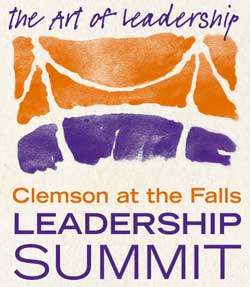
Do you recall a time when you lacked creativity and passion, but needed it to be successful? What was your emotional response to the situation? What lessons did you learn from it? Do think those lessons are still relevant for today’s leaders?
Everyday I battle the ability to deliver creatively! I get paid to be creative and to be passionate in the way I deliver this creativity. Creativity strikes when I do not expect. I cannot force it to come to fruition…it is like an old, dependable friend who chooses to visit when you least expect it.
Some of my greatest ideas have come to fruition in the middle of the night. I have won all my awards from 3am inspiration. I remember working in Phoenix, producing a story of a lady who broke out of South Phoenix and welfare, working to get her life back on track. We had been following her story for months…tracking her progress from the rundown apartment with a littered front yard…to a new home and new job. I just could not figure out how to put it all together. To write the words, to weave the interviews, to expose the moments in time that bring an audience to the edge of their seats. I lived an hour away from the office and at 3am…I sat up in my bed, jumped in the car, raced to the station, and edited the story. This was when Avid and FCP were not available on cute little MacBookPros. We had large computer systems to edit.
We have to be willing to listen to our hearts and when inspiration comes to visit, just like that old friend, we have to be willing to capture that moment in time and exercise that creative passion.
Here is this story below that I was referring, big thanks to my partner Laurie Raymond from KPHO-TV for her great reporting!
Sarah and I were sitting around tonight watching a little Friday night television and a K-Mart commercial caught my attention. I am not sure why, maybe it was the music that made me cue into the message. The song sounded familiar, but I was not interested in the song…I was interested in the clothes the kids were wearing.
This was a back to school message, showing off all the new cool kids clothes. Those back-to-school fashions that grab the dollars right out of the pockets’ of moms and dads. I was thinking back to when I was in middle school and even high school. What clothes were in fashion. I remember in 6th grade, all the girls were wearing “Jellies”. Do you remember those “flats” that girls were wearing. How about break dancing pants, the ones with all the zippers. Yes, I am remembering those 80’s influenced by pop culture icons like Michael Jackson.
But where did those fashions originate. How did they end up in our closets. How did they trickle down into little South Carolina, influencing kids interests which influenced moms and dads to make that purchase. Did those fashions come from Europe where fashion is truly influential in international hearts and minds? Was there one designer that create that one design, ultimately creating a cultural fad in all the American schools, making it the cool thing to wear?
Think about Apple and the cultural shift this technology and design animal has created with an iPhone. The idea of making a touch screen cool and desirable. Not only making this concept the technological break through in American culture, but making it the most desirable brand item…creating so much demand people line outside of stores days before the release. What one person came up with this idea which influenced technological pop-culture. We could list company after company, one after another that have influenced the way we purchase items.
I sat in a fascinating forum this morning, listening to some of the most renowned automotive thinkers. The InnoMobility Forum at CUICAR. As I was listening to a presentation over WebX, a gentleman from Munich, Germany was talking about building innovative communities of automotive creation. People from BMW and numerous automotive suppliers were sitting in a room listening through this presenters German accent, fascinated with his thoughts as he flipped through slide after slide.
The next presenter was talking about bearings inside transmissions. Now this does not sound exciting, except when you think about all the new battery powered cars on the road now. They no longer have engines that create exhaust, ultimately noise. If you remove this noise by removing the internal combustion exhaust system…you begin to hear all the little clicks, ticks, and tocks. Those metal parts rubbing against each other that create friction and noise. Now, engineers are having to make metal to metal quieter.
At the end of the presentation, a question was asked that surrounded the cultural shift in way we will one day use transportation. The presenter explained that we will be shifting back to the way we built transportation in those early days of the automotive industry. He began to explain we will not just see just electric cars or just hybrids…we will see a host of solutions based on geography. Electric cars in the city, since it is easier to provide charging stations, hybrids for metro to suburbia, and internal combustion engines for rural areas where gasoline makes the most sense, except in a more fuel efficient manner.
He went on to describe the shift in the cultural circle from those early days. The days when the first automakers were creating gasoline engines, steam engines, and even battery powered vehicles. The presenter noted this cultural circle as a shift in the way the automotive industry is now creating transportation, influenced by industries including the airline industry.
So I get back to that K-Mart commercial…how are we influenced to make purchasing decisions. Where does culture begin that influences the designers, engineers, developers, suppliers, marketers, and ultimately those consumers who choose to shift the way they purchase their next vehicle. Where will it originate? Will it begin in Europe…I think many hope that it might begin from the innovation right inside the doors of CUICAR.
Check out InnoMobility this coming October.


